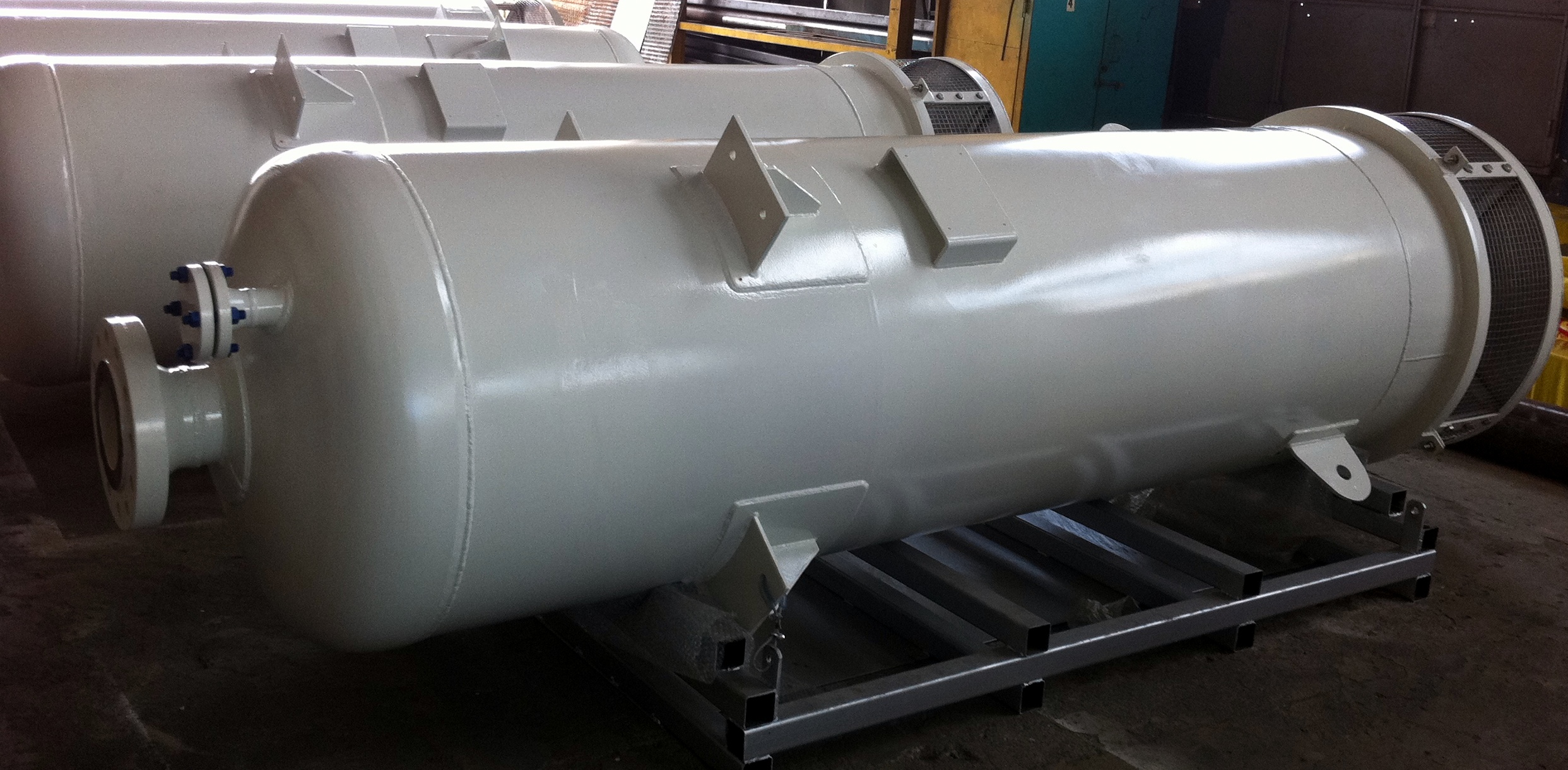
Vent Silencers reduce the noise produced by the expansion of gas or steam from elevated pressures to atmospheric pressure. These absorptive silencers are used to suppress noise generated by high velocity gas streams such as steam vents, safety relief valve outlets, system blow downs and purge outlets. Each vent silencer is designed to attenuate the noise level to the required sound pressure level criteria at a given distance from the silencer. Model IVS - Acoustic Diffuser & Expansion.
Vent silencers effectively silence high-velocity air, steam, and gas vents and blowdowns to atmosphere where sonic or critical conditions exist in the valve or pipes. Typical applications include:
Typical vent silencers are welded heavy-duty units. The inlet nozzle and diffuser are constructed of steel and are welded. The diffuser provides controlled pressure expansion to atmosphere and uniform flow distribution through the acoustic section of the silencer. The lined inlet plenum (expansion chamber) of the silencer is designed with a double shell separated by a layer of acoustic insulation and sound-deadening material. The inner shell is solid to prevent shell radiated noise and migration of the acoustic fill. The transmission loss across the plenum and bottom head is comparable to the silencer attenuation.
Use the following design information from the valve data sheet for system analysis and silencer selection: